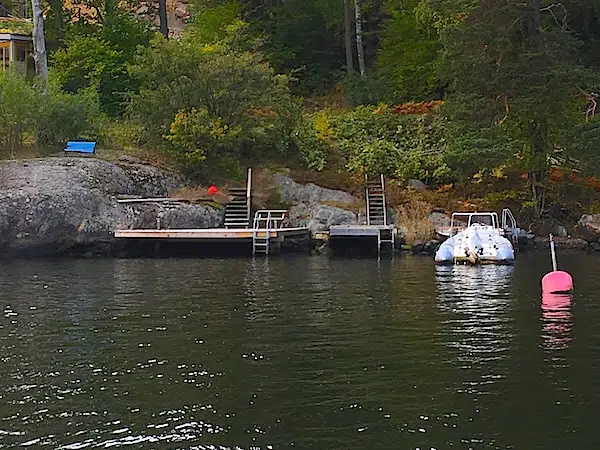LAWS AND REGULATIONS
Before spending too much time planning which type of jetty is best suited, it is important to understand the prerequisites for what is required to obtain permission to build the jetty. Please note that the information on allabryggor.se does not constitute legal advice in the formal sense.
In Sweden, since 1952, when the Allemansrätten was established, we also have regulations regarding beach protection. The beach protection regulates construction around lakes, seas and waterways – and exists to protect public access to these areas and to protect plant and animal life. Below we go through the most important parts and what you should think about in connection with a planned construction of a jetty and other work in and near water.
Beach protection is a so-called prohibition rule, which thus prohibits construction in and around water, but which also includes a number of reasons where exceptions to the ban can be given in the form of a so-called beach protection dispensation. It is therefore this dispensation that you apply to the municipality’s building committee in order to get permission to build your jetty. Exemption requirements apply to all types of jetties that are intended to be in the same place for more than one holiday period (approx. 6 weeks), even if it is a smaller floating jetty. Dispensation is of course also required for other buildings such as boathouses and boathouses. Also water works (“Water activities”) such as dredging, cable laying, construction of stone piers require a permit, which depending on where in the country is sought from the municipality or County Council.
When applying for a beach protection dispensation, it is best to start from the special reasons defined in the regulations that can justify a dispensation.
Special reasons for beach protection dispensation according to Chapter 7 of the Environmental Code. Section 18c:
” Section 18 c As special reasons when considering a question of
suspension of or exemption from the beach protection, one may
only take into account if the area to which the suspension or exemption refers
1. has already been taken up in a way that makes it
irrelevant to the objectives of the beach protection ,
2. through a road, railway, building, business or other
development is well separated from the area closest to
the shoreline,
3. is needed for a facility that must be located
by the water for its function and the need cannot be met outside the area,
4. is needed in order to expand an ongoing activity and
the expansion cannot be carried out outside the area,
5. needs to be used to satisfy an urgent
public interest that cannot be served outside the area,
or
6. needs to be used to satisfy another very
urgent interest.”
There are also special reasons to invoke if the construction takes place in so-called rural development areas. Full legal text can be found here .
Application process
In your application to the municipality, you therefore do best to proceed from the defined special reasons, and not from a possible desire to be able to add another boat or the possibility of placing tables and chairs on the jetty. Rather, these reasons lead directly to a denied exemption. For this reason, it is important that you investigate in good time whether your reasons really match those that qualify for exemption or not.
When you have submitted your application, the municipality has a 10-week processing time within which they need to come back with either supplementary questions or a decision. In the application, you should include 1) application form available from the municipality 2) name and contact details, 3) property coverage and 4) drawing of the bridge’s construction and location on the property.
If your dispensation application is denied, you can try it at the County Administrative Board, however, the decision from the County Administrative Board takes longer and is final. If your exemption application is granted by the municipality, the County Administrative Board always has three weeks to reconsider the decision. In order to avoid administrative work at the municipality and the County Board, as well as to save you time, it is recommended to ask the administrative officer at the municipality for a so-called advance notification, where any shortcomings in the application or alternatively cited special reasons are described, before the “real” application process has started.
TO THINK OF:
- Carefully study the specific grounds for exemption and whether any of them really apply to your case.
- Minimize the environmental impact when choosing the location and construction of the jetty. Keep in mind that the water should ideally be able to flow freely around the jetty, take up as little bottom surface as possible and ideally be placed next to existing buildings.
- Save time by talking to neighbors about how they feel about your application and what their experiences with the municipality have been in similar matters.
- Talk to the administrator at the municipality before submitting the application to find out about any municipality-specific practices. There are usually visiting hours for this.
- Get help from your brew supplier. They usually have solid knowledge and experience about what is right, true and realistic.


